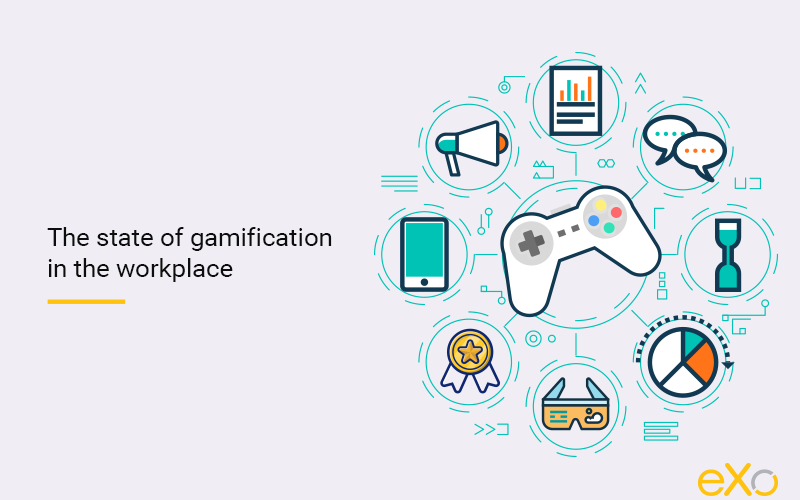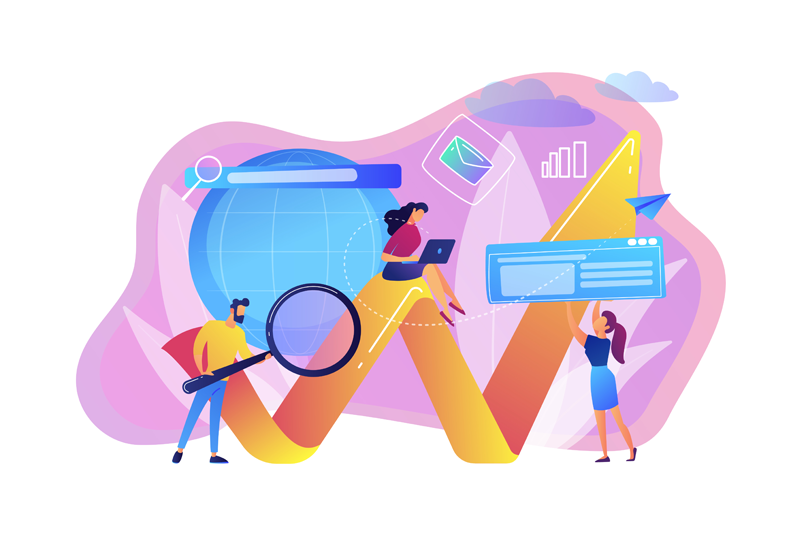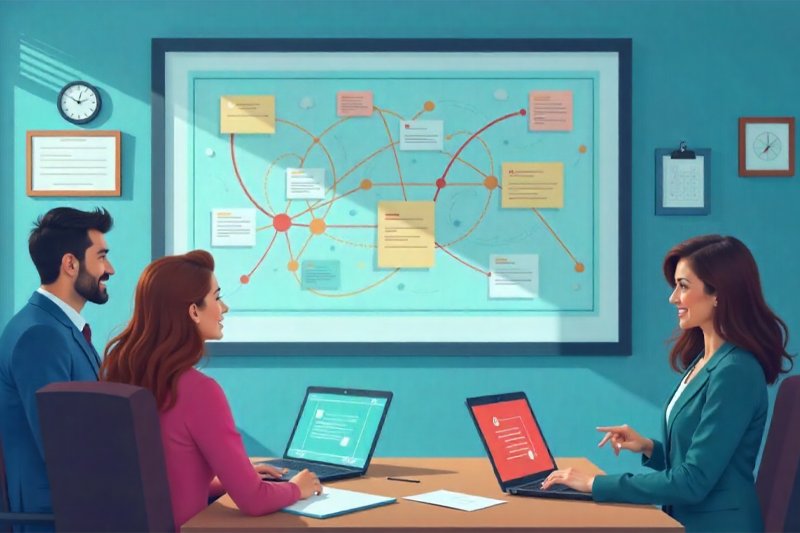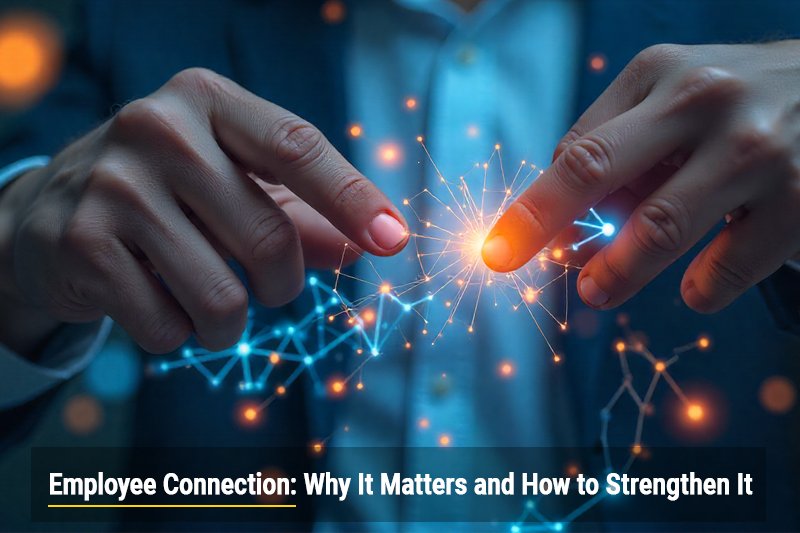- Brahim Jaouane
- February 27, 2020
The state of gamification in the workplace: Use cases and future trends

Content
A number of studies have found an increasing willingness among both companies and their employees to adopt and implement gamification. According to a TalentLMS study, 89 per cent of employees said that gamification helps them feel productive and happy at work, with 33 per cent expressing a desire to have game-like features in their training software. With these key figures in mind, we can safely say that gamification has moved from being just something nice to have to being an absolute necessity in order to attract, engage, and retain talented people and move ahead of the competition.
In this blog post we will consider some use cases of effective gamification systems and discuss the future of the technology.
But first, let’s start by defining gamification
In a nutshell, gamification is the deployment of elements of game design within the use of applications, to boost usage and engagement. Gamification programs started to gain momentum with mobile applications and e-learning platforms, thanks to their proven ability to engage and retain users by triggering their dopamine or feel-good hormone, making them emotionally attached to the platform and willing to come back for more. The mechanics and techniques used within each app or platform differ, depending on specific business needs, but the fundamentals remain more or less the same. A typical gamification system consists of badges, leaderboards, levels, etc.
These techniques, if implemented correctly, can bring a number of benefits to businesses, including helping employees to perform their daily activities effectively, promoting healthy competition, and encouraging employees to voice their opinions.

FREE WHITE PAPER
Types of Digital workplace solutions
The modern workplace has evolved significantly in recent years, with advancements in technology, the growing number of tools …
Examples of gamification systems
Gamification is by no means a new concept. Its roots are traced back as far as 1908, and the founding of the Boy Scouts Association (a British organization created to help teenagers learn principles such as good citizenship, chivalrous behavior, and skill and abilities in various outdoor activities). Within the organization, scouts were recognized for their achievements and proficiency in certain tasks with the award of badges. Although it was not called gamification then, the techniques used have striking similarities to today’s basic gamification systems. The 1970s and 80s were the times when academics started to recognize gamification and to research a variety of techniques to increase productivity in the workplace. One of the most notable books on the topic is “The Game of Work”, written by Chuck Coonradt in 1985.
Considered by many to be the godfather of gamification, Coonradt tried to tackle the issue of decreased productivity in the U.S. by developing five key principles: setting clear goals and objectives, keeping clear scoreboards and scorecards, gathering frequent feedback, freedom of personal choice of methods, and continuous coaching. These principles became the foundation of many gamification initiatives, with Coonradt helping big corporations such as Coca-Cola and Microsoft among others to bring game-like features to the workplace, products, and marketing campaigns.
The hype surrounding gamification grew even further when it actually had its name invented by British computer programmer Nick Pelling in 2002. This period marked the birth of gamification as we know it. More and more use cases emerged, covering a variety of functions such as HR, marketing, and software development. Below are the most common use cases in business today.
Attracting and recruiting talented people
Attracting and recruiting talented people is a tricky task for businesses using recruitment agency software. This is mainly due to the fierce competition and the repetitive, old, and boring nature of the hiring process. Using the internet, candidates can prepare for typical questions online and attend job interviews with scripted answers. This makes it harder for recruiters to evaluate the skills and motivation of each candidate which often results in an effective hiring process.
Combining gamification with recruitment, or what is commonly referred to as “recruitainment”, is a great way to evaluate candidates, assess their motivation, and test their decision-making and problem-solving abilities and their creativity. This can be achieved by developing interactive quizzes, puzzles, challenges, and simulated work environments. Furthermore, real-time progress charts and leaderboards can show candidates where they stand in the hiring process relative to other candidates, which gives extra motivation to reach the final stages and win the reward.
Onboarding
When new hires join a company, they are often faced with the challenge of getting to understand their roles, learn more about the company they have just joined, and more importantly, remember a lot of names and faces. This can be overwhelming even for the most serious and motivated of new hires. Sure, classic onboarding processes can help in a way. But a PowerPoint presentation of the company, video tutorials, and an unguided tour of an intranet or digital workplace are not enough to properly prepare newcomers for the job ahead. This is where gamification comes into play; with its rich set of fun features, they can simultaneously onboard and engage individuals.
Incorporating storytelling elements is a typical example of a gamified onboarding process. Candidates have characters in a virtual world with multiple levels. Completing each level will result in rewards and badges. Storytelling can help new hires to understand their surroundings, create bonds with their colleagues, and become excited about the tasks ahead.
Another example to help new hires remember who is doing what in the company is to introduce gamification to the organizational chart. Org chart software like Pingboard provides scavenger hunt games to achieve just that. For example, users may be asked to find a manager on the chart, or an employee with specific skills and interests. Additionally, fun quizzes and flash card games of Who Is Who? are also very popular, and effective in making employees remember their peers’ names.
Training
Similar to both recruitment and onboarding, the process of training employees can become boring and repetitive. Sitting in a meeting room for hours a week or watching a tutorial online are the most often used ways to train employees. Although they can help deliver the message and train for certain activities, the old training methods lack the engaging and fun elements that are proven to transmit information more easily. This is why a number of big corporations such as McDonalds, Google, and others thought about gamifying their training methods, to make learning more enjoyable and interactive and to gather real-time feedback from their workforce.
The easiest and most cost-effective way to introduce gamification to training is to assess the training materials already in place. For example, if the learning management system has a number of chapters and levels, rewarding employees who learn and solve problems quickly with badges is a great way to start. Leaderboards and scorecards are also effective in making employees aware of their progress and willing to compete in a healthy way with their peers.
Dedicated learning platforms took gamified learning to new heights, beyond the more traditional approach of just using badges, leaderboards and trophies. Entire virtual worlds that represent an exact replica of restaurants, factories, or warehouses help employees to get a sense of their surroundings and become used to a specific layout. Additionally, these new techniques focus heavily on building experiences through storytelling and complex branching scenarios.
Engaging communities and encouraging collaboration
The use of gamification to engage communities and encourage spontaneous interactions between users was and still is the prime focus of forums. Popular forums sites such as Reddit, Gamespot, and others reward their users for their contributions with trophies, keep them aware of their ranking with clear progress bars, and personalize their experiences with personalized activity streams and cool avatars, or in some cases 3D models from photos.
Businesses took notice of the success of such techniques, and gamification started to make its way to the workplace as a way to engage communities and get employees to work and collaborate effectively. Classic gamification systems designed for such purposes are designed to integrate with an intranet, digital workplace, or productivity apps used daily. Different actions have different point values, and they are grouped in domains such as social relations, knowledge sharing, teamwork, and feedback. For example, posting useful information frequently, answering questions, or simply liking and commenting on posts can all result in points awards. These points are visible on leaderboards, with employees ranked based on their actions.
company intranet
Trends and future of gamification
Combine game design elements and immersive technology
The increasing willingness of tech companies to invest heavily in immersive technologies like Augmented, Virtual, and Mixed Reality made them an essential part of everyday life. Popular gaming consoles such as Playstation and mobile devices come equipped with VR headsets designed to improve the user experience when playing games like Fortnite Spiderman, watching movies, etc. Furthermore, retail giants such as Walmart and Amazon are bet on such technologies to revolutionize the shopping experience, by showcasing their products in virtual showrooms and allowing customers to try products from the comfort of their homes.
With these advancements, it was only a matter of time before businesses came up with ideas that will allow them to bring the benefits of immersive technologies to the workplace. Use cases range from immersive learning and onboarding to entire virtual worlds.
Microsoft, Facebook and Samsung have already introduced a combination of software and hardware based on VR, AR, and MR. Facebook’s Oculus for Business and Gear VR by Samsung are prime examples of such innovations that promise efficient, cost-effective and interactive learning through virtual simulations and a rich visual sensory experience.
Corporations across multiple industries are already using the technology for safety training, soft skills training, and a variety of other tasks such as delivery, food preparation, and more. For example, ExxonMobil adopted VR for safety training. Users simply had to put on a helmet and headphones and use the controllers to perform hazardous operations. With the virtual world being reactive and with a host of scenarios, employees can learn how to take decisive actions in a safe environment.
With immersive technology still at the novelty stage, we expect more advancements in the coming years, and further adoption.
Empathy mapping
The major flaws of most gamification initiatives are their complexity and inability to effectively understand users’ needs. This can be attributed to a lack of preparation, where businesses don’t perform the necessary research before implementing a gamification system, or adopt systems that are poorly designed. Empathy mapping can fix these flaws, as users want to identify with the solution in place.
In its simplest form, empathy mapping is a visualization that helps game designers identify what they know about an end user or multiple users. A typical empathy map consists of four major parts: What the user says, thinks, does, and feels.
- The ‘says’ quadrant examines what users say during one-on-one interviews or focus groups.
- The ‘thinks’ quadrant tries to understand what the user is thinking throughout the experience, and when asked specific questions.
- The ‘does’ quadrant captures the users’ actions and how they interact with the system put in front of them.
- The ‘feels’ quadrant is simply the user’s emotional state; how he or she feels about the system. For example, a user may be confused with the game’s rules, happy with the overall experience, etc.
Shifting game development from generic designs to user-centered designs that embody the users’ feelings and emotions is the way ahead for gamification initiatives in the workplace.
Personalization
While empathy mapping is used by game designers to create gamification systems tailored to users’ needs, personalization is the process of creating highly contextualized and personalized experiences using data analytics, machine learning, and artificial intelligence.
With personalization, businesses can expect solutions that evolve based on user behavior and feedback. Personalization tracks users’ activity like the time spent on the platform, establishes links between their activities and their profile information (interests, personality, etc), and further examines users’ behavioral change based on past interactions with the system.
A personalized gaming experience can bring a number of benefits to the use cases we mentioned earlier, including:
- allowing users to learn at their own pace;
- selecting learning paths that match their own abilities;
- getting personalized feedback based on their actions;
- setting personal goals and objectives.
- Gamification and the Internet of Things
The Internet of Things (IoT) is a collection of interconnected devices capable of gathering and transferring data about their usage and surroundings. A typical IoT ecosystem contains a variety of smart devices connected to the internet or a centralized IoT platform.
The very nature of IoT consists of gathering information about user behavior through a collection of interconnected devices and platforms, from building management systems and repurposed smart home appliances to wearables and light bulbs. This suggests that IoT can easily be associated with gamification systems, as they too are designed to capture and act on users’ behavior.
The possibilities are endless when it comes to combining IoT and gamification. For example, fitness contests can be set in the workplace based on data extracted from gadgets like smart watches, with more active and fit employees getting rewards for their hard work. Monitoring and reducing energy consumption is also achievable by tracking energy consumption by employees through smart devices like light bulbs and air conditioning.
With the growth of the gamification market and the growing number of research studies conducted on the topic, it is safe to say that gamification is here to stay. However, the rapid advancements of consumer technologies and changes in user behavior make it somewhat tricky to accurately predict the future of gamification. But one thing is certain: game principles will be at the heart of the workplace of the future.
Where to go from here:
- Tags: Employee engagement, workplace
Related posts
- All
- eXo
- Digital workplace
- Employee engagement
- Open source
- Future of work
- Internal communication
- Collaboration
- News
- intranet
- workplace
- Knowledge management
- Employee experience
- Employee productivity
- onboarding
- Employee recognition
- Change management
- Cartoon
- Digital transformation
- Infographic
- Remote work
- Industry trends
- Product News
- Thought leadership
- Tips & Tricks
- Tutorial
- Uncategorized
Leave a Reply
( Your e-mail address will not be published)


